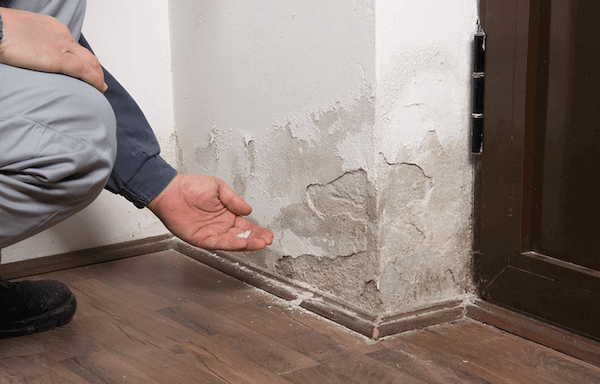Do's & Don'ts of Water Restoration.
Do's & Don'ts of Water Restoration.
Blog Article
What're your insights and beliefs on Simple Solutions To Preventing Fire And Water Damage To Your Home?

Though water offers life, water invasion on components where it's not supposed to be can lead to damage. If the water soaks right into your structure, it can peel off away surfaces and also wear down the foundation. Mold as well as mildew also prosper in a wet environment, which can be harmful for your health and wellness. Houses with water damage odor musty as well as old.
Water can come from several resources such as tropical storms, floodings, burst pipelines, leakages, and sewer concerns. In case you experience water damages, it would be great to know some safety and security preventative measures. Right here are a few guidelines on how to manage water damage.
Do Prioritize House Insurance Policy Coverage
Water damage from flood dues to heavy winds is seasonal. You can also experience an abrupt flood when a malfunctioning pipeline unexpectedly ruptures into your house. It would certainly be best to have house insurance coverage that covers both acts of God such as all-natural tragedies, and emergency situations like broken plumbing.
Do Not Forget to Switch Off Energies
In the event of a disaster, especially if you live in a flood-prone location, it would certainly be recommended to turn off the major electric circuit. This cuts off power to your entire residence, avoiding electric shocks when water comes in as it is a conductor. Don't fail to remember to transform off the primary water line shutoff. Furnishings will relocate around and also trigger damages when floodwaters are high. Having the main valve turned off avoids additional damage.
Do Remain Proactive as well as Heed Weather Condition Notifies
Tornado floods can be very unpredictable. Remain prepared as well as aggressive if there is a background of flooding in your neighborhood. Listen to discharge warnings if you live near a creek, river, or lake. Secure belongings from the very beginning and basement, after that put them on the greatest feasible degree. Doing so lowers prospective home damages.
Don't Overlook the Roof
You can stay clear of rain damage if there are no holes and leaks in your roofing system. This will avoid water from streaming down your wall surfaces and also saturating your ceiling.
Do Pay Attention to Small Leakages
A ruptured pipeline does not occur overnight. Usually, there are warnings that show you have actually deteriorated pipes in your home. For instance, you may see gurgling paint, peeling wallpaper, water touches, water spots, or dripping audios behind the walls. Eventually, this pipeline will certainly burst. Preferably, you must not wait for points to intensify. Have your plumbing repaired prior to it results in substantial damages.
Don't Panic in Case of a Burst Pipe
When it comes to water damages, timing is essential. Hence, if a pipe ruptureds in your home, quickly shut off your primary water valve to reduce off the resource. Call a respectable water damage remediation expert for assistance.
Water provides life, water intrusion on parts where it's not meant to be can result in damage. Homes with water damage scent old as well as moldy.
Water damage from flood charges to hefty winds is seasonal. You might discover bubbling paint, peeling wallpaper, water streaks, water stains, or trickling noises behind the walls. When it comes to water damages, timing is key.
Some Do's & Don't When Dealing with a Water Damage
DO:
Make sure the water source has been eliminated. Contact a plumber if needed. Turn off circuit breakers supplying electricity to wet areas and unplug any electronics that are on wet carpet or surfaces Remove small furniture items Remove as much excess water as possible by mopping or blotting; Use WHITE towels to blot wet carpeting Wipe water from wooden furniture after removing anything on it Remove and prop up wet upholstery cushions for even drying (check for any bleeding) Pin up curtains or furniture skirts if needed Place aluminum foil, saucers or wood blocks between furniture legs and wet carpet Turn on air conditioning for maximum drying in winter and open windows in the summer Open any drawers and cabinets affected for complete drying but do not force them open Remove any valuable art objects or paintings to a safe, dry place Open any suitcases or luggage that may have been affected to dry, preferably in sunlight Hang any fur or leather goods to dry at room temperature Punch small holes in sagging ceilings to relieve trapped water (don't forget to place pans beneath!); however, if the ceiling is sagging extremely low, stay out of the room and we'll take care of it DO NOT:
Leave wet fabrics in place; dry them as soon as possible Leave books, magazines or any other colored items on wet carpets or floor Use your household vacuum to remove water Use TV's or other electronics/appliances while standing on wet carpets or floors; especially not on wet concrete floors Turn on ceiling fixtures if the ceiling is wet Turn your heat up, unless instructed otherwise

I'm certainly very fascinated by Preventing Fires and Water Damage In Your Home and I hope you appreciated our piece. Liked our piece of writing? Please share it. Let somebody else locate it. Thanks a lot for going through it.
Report this page